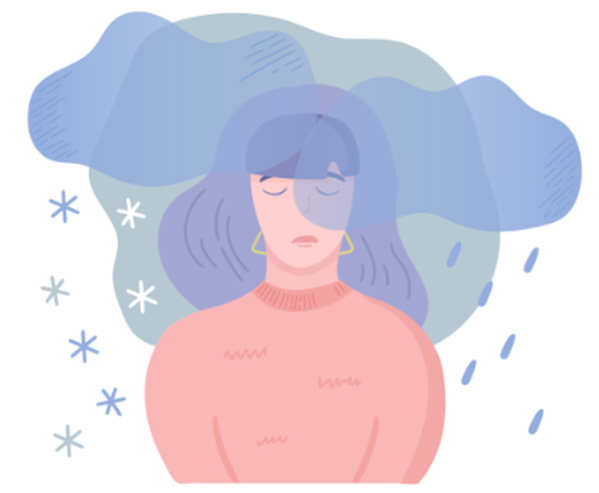Introduction
Menopause is a natural biological process that marks the end of a woman’s reproductive years, typically occurring in her late 40s or early 50s. However, for many women, this transition is not just about physical changes but also emotional ones. Seasonal Affective Disorder (SAD) or seasonal depression can compound the emotional challenges faced during menopause.
Understanding SAD and Menopause
SAD is a subtype of depression that occurs at specific times of the year, usually during the fall and winter months when there is less natural sunlight. Its symptoms include low energy, moodiness, and difficulty concentrating. Menopause, on the other hand, brings about hormonal fluctuations that can affect mood and emotional well-being. Combining the two can be particularly challenging, as hormonal changes can exacerbate SAD symptoms.
Herbal Remedies for SAD and Menopause
1. St. John’s Wort: This herbal supplement is commonly used to alleviate symptoms of mild to moderate depression, including those associated with SAD. It may help regulate mood and improve overall emotional well-being, including feeling physically attractive. It may take 8 weeks to notice effect. It may also help with hot flash frequency.
2. Saffron: Saffron is a spice known for its mood-enhancing properties. Studies have shown that saffron supplements may reduce SAD symptoms and improve mood during menopause while also reducing hot flashes.
3. Black Cohosh: Often used to manage menopausal symptoms, black cohosh may also help alleviate mild depression and anxiety. It’s believed to have a calming effect on the nervous system. There is an even more powerful effect when combined with St. John’s Wort.
Hormonal and Other Treatments for SAD and Menopause
1. Exercise: Multiple studies have shown that physical activity alleviates SAD symptoms and improves mood!
2. Hormone Replacement Therapy (HRT): HRT involves replacing the needed hormones (thyroid, estrogen, progesterone and sometimes testosterone) that decline during menopause. Some women find that HRT can help stabilize mood swings and reduce the emotional impact of menopause, which can indirectly alleviate SAD symptoms. Read more about hormones here.
3. Light Therapy: When natural sunlight isn’t available, light therapy is a simple, non-invasive treatment for SAD. Intentional exposure to bright, artificial light can help regulate circadian rhythms and reduce SAD symptoms. During the day use bright Daylight bulbs for working. Then at night use warmer Soft White for a more relaxing experience. You can also use more directed light for 20 – 30 minutes using a light box – look for one with 10,000 lux of light that produces as little UV light as possible.
4. Selective Serotonin Reuptake Inhibitors (SSRIs): These are prescription antidepressants that can be effective in treating SAD. SSRIs work by increasing the levels of serotonin in the brain, which can improve mood and reduce depressive symptoms. SSRIs can help with hot flashes too.
Combining Approaches
It’s important to note that treatment effectiveness can vary from person to person. Some individuals may find relief through herbal remedies, while others may require hormonal treatments or a combination of therapies. Always consult a healthcare provider, like myself, before starting any treatment regimen, especially if you have underlying health conditions or are taking other medications.
Conclusion
Menopause can be a challenging phase in a woman’s life, and when combined with Seasonal Affective Disorder, it can lead to emotional upheaval. Fortunately, there are various treatment options available, including herbal remedies and hormonal therapies, that can help alleviate the symptoms of both conditions. Finding the right treatment plan may require some trial and error, so it’s essential to work closely with a healthcare provider to develop a personalized approach that suits your unique needs and preferences. With the right support, women can navigate menopause and SAD with greater ease and improved emotional well-being.

